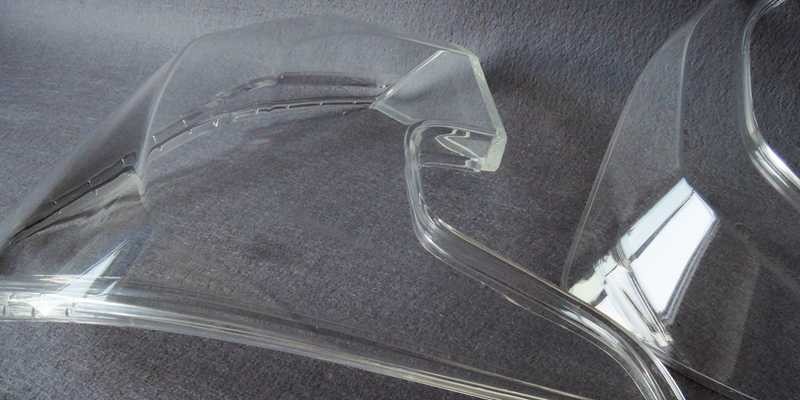The automotive industry is in constant pursuit of excellence, continually refining vehicle performance, handling dynamics, safety features, and fuel efficiency. Underpinning these advancements are increasingly sophisticated automotive assembly systems, which undergo continuous evolution. Software engineers play a critical role in validating every modification within the automobile assembly line, meticulously ensuring each change is free of technical errors.
The integration of custom machining in the automotive industry for producing intricate automotive components has significantly streamlined car assembly processes. This article provides an in-depth exploration of automotive part manufacturing and, crucially, the processes involved in Assembling Car Parts. Let’s delve into the essential aspects of this field.
A Detailed Look at Automotive Parts Manufacturing
The automotive market today offers a diverse array of parts designed for optimal vehicle performance and durability, largely due to ongoing technological innovations within the sector. The manufacturing of these parts involves several key stages:
1. Raw Material Selection: The Foundation of Quality
Raw materials are fundamental to any manufacturing endeavor. Automotive part manufacturers prioritize a thorough examination of raw material properties to select the ideal grade for each component. This assessment includes evaluating the physical, chemical, and mechanical characteristics of materials, particularly metals and plastics. Beyond these properties, manufacturers also consider sustainability, cost-effectiveness, and weight, aligning with evolving consumer demands and environmental consciousness.
2. Design and Engineering: Precision in Planning
Automotive parts must adhere to stringent vehicle specifications and meet consumer expectations for design and functionality. Manufacturers dedicate significant effort to creating precise designs, rigorously reviewing and refining them to achieve perfection before production commences. Upon design and engineering specification approval, the manufacturing phase can begin.
3. Manufacturing: From Raw Material to Component
This stage involves the actual fabrication of automotive components from raw or semi-processed materials, following the approved designs. Modern automotive manufacturing facilities utilize automated machinery and advanced welding systems, integrating processes like cutting, shaping, and joining to produce specialized parts efficiently. These advanced systems also offer the flexibility to adapt software designs rapidly for creating diverse custom parts, catering to specific vehicle models and requirements.
4. Finishing: Enhancing Functionality and Aesthetics
Finishing processes are applied immediately after manufacturing to enhance both the functionality and visual appeal of car parts. A variety of surface treatments and post-processing techniques are employed for custom automotive parts, including painting, polishing, screening, grinding, bead blasting, electroplating, and powder coating. These processes ensure parts meet aesthetic standards, improve corrosion resistance, and enhance overall durability.
Essential Systems and Components for Car Assembly
Modern automobiles are complex assemblies comprised of numerous interconnected parts and systems. Understanding these key segments is crucial to appreciating the intricacies of car assembly:
- Chassis and Auto Body (Including wheels, tires, and brakes)
- Engine and Engine Components
- Lubrication System
- Transmission System
- Security System
- Cooling System
- Fuel Supply System
- Front and Rear Axle Assemblies
- Steering and Suspension System
- Electrical and Air Conditioning System
Automotive Assembling Explained: The Heart of Vehicle Production
Automotive assembling is the systematic process of integrating individual automotive parts sequentially at various workstations along an assembly line, culminating in a fully assembled vehicle. The assembly line concept, now prevalent throughout the automotive industry, is designed to automate and accelerate the efficient production of standardized vehicles. A typical car assembly line is structured around four primary stages: stamping, body shop, paint shop, and final assembly.
However, vehicle assembly systems are not monolithic; they vary across factories depending on production volume, model diversity, performance targets, and desired flexibility. The ideal assembly system is adaptable, allowing for modifications to accommodate different vehicle setups or new production models. A prime example is the mixed-model assembly line, which is engineered to handle the assembly of various automobile models within the same production flow, maximizing efficiency and responsiveness to market demands.
The rise of automation has profoundly impacted car assembly. Most automotive manufacturers now utilize robots extensively to execute repetitive and complex tasks previously performed by human workers. These robots enhance flexibility, accelerate production speeds, ensure consistent quality, minimize material waste, improve workplace safety, and reduce the incidence of human error in the assembly process.
Key Challenges Facing Automotive Assembly Technologies
The automotive industry faces a dynamic landscape characterized by global sourcing, ongoing restructuring, and intense competition. These factors, alongside specific technological hurdles, present significant challenges for automotive assembly technologies:
1. The Pressure of Mass Customization
The automotive industry has shifted from mass production towards mass customization, driven by consumer demand for personalized vehicles. This transition poses a significant challenge to traditional assembly technologies, which struggle to meet the increasing demand for customized vehicles while efficiently managing resources and materials. The inherent constraints of large-scale production lines often limit the ability to support a wider variety of vehicle configurations and bespoke features.
2. Escalating Vehicle Complexity
Modern vehicles are becoming increasingly complex to manufacture, incorporating advanced technologies and intricate designs. This complexity presents a major challenge for existing assembly technologies. To effectively manage this increasing intricacy, automakers must integrate assembly systems with enhanced flexibility and adaptability. Strategic decisions regarding the cost and quality of these advanced assembly systems are crucial for maintaining production efficiency and profitability while meeting the demands of sophisticated vehicle designs.
How Custom Part Manufacturing Drives Efficient Car Assembly
Manufacturing precise custom parts is instrumental in enabling automotive manufacturers to produce large volumes of standardized vehicles rapidly and efficiently. The availability of consistent, high-quality custom components minimizes variations in the final product, which is vital for ensuring vehicle safety and performance. Using substandard or incorrectly manufactured parts can lead to significant safety hazards and costly recalls.
Custom CNC machining services are at the forefront of reliable and precise automotive part manufacturing. Here’s how custom CNC machining enhances car assembly:
● Unmatched Precision and Accuracy
CNC (Computer Numerical Control) machines utilize computer-driven automation to control manufacturing tools with exceptional precision. Automakers rely on these machines to fabricate car components that meet extremely tight tolerances. This high degree of accuracy in part manufacturing ensures seamless assembly processes, as components fit together correctly without requiring adjustments or rework, saving time and resources.
● Broad Material Compatibility
CNC machines are compatible with a wide array of materials, making them ideal for producing diverse custom automotive parts. Common materials used include aluminum, steel, titanium, plastics, and copper. This versatility allows automakers to select the optimal material for each component based on performance requirements, weight considerations, and cost-effectiveness, leading to improved vehicle design and assembly.
● Streamlined Functional Testing of Parts
CNC machining facilitates the rapid creation of automotive prototypes, which are essential for refining the design and quality of custom car parts. Manufacturers use prototypes to rigorously test the functionality and performance of various components before committing to large-scale production. This approach significantly reduces production costs by identifying and resolving design flaws early in the development process, ensuring high-quality parts for assembly.
● Enhanced Visual Prototype Verification
Custom CNC machining also supports the design and verification of visual prototypes. These prototypes allow automakers to thoroughly examine and evaluate the aesthetic aspects, form, and dimensions of proposed automotive parts. By assessing visual prototypes, manufacturers can ensure that components are not only functionally sound but also aesthetically aligned with vehicle design requirements, preventing potential issues and recalls post-production.
Diverse Applications of Car Assembly Systems
Modern automotive companies utilize car assembly systems that integrate both automated technologies and human-operated processes, creating hybrid systems that offer greater flexibility for assembling a range of vehicle types, including cars, trucks, buses, and vans. Key applications of these systems include:
1. Material Handling Efficiency
Automated assembly systems are crucial for handling and transporting heavy and bulky components within the assembly line, such as engine blocks, dashboards, and fuel tanks. These systems improve efficiency, reduce manual labor, and enhance workplace safety by automating the movement of heavy parts.
2. Advanced Joining Techniques
Vehicle assembly systems incorporate advanced techniques for joining two or more car components to create sub-assemblies. Innovations like self-drilling and self-piercing rivets have further improved the efficiency and strength of automotive part joining. Mixed model assembly systems are often favored for their ability to ensure high joint strength and consistent quality across different vehicle models.
3. Precise Positioning and Fixturing
Automobile assembly technologies employ fixtures, brackets, and clamping devices to accurately position car parts during assembly. These tools ensure that components are placed in the exact required position and remain securely fixed throughout the assembly operation, contributing to the overall precision and quality of the final vehicle.
Examples of automotive assembly systems in action include:
- Engine Performance Testing Systems
- Ignition Monitoring and Control Systems
- Mechanical Testing and Validation Equipment
- Telematics Integration Systems
- Ultrasonic Inspection for Quality Control
- Vibration Analysis for Component Reliability
- Component Testing and Verification Stations
- Data Logging and Performance Monitoring
- Anti-lock Braking System (ABS) Assembly and Testing
- RADAR Ranging and Sensor Calibration Systems
- Robot Vision Systems for Automated Assembly
WayKen: Your Partner in Automotive Part Manufacturing and Assembly
Automakers continually strive to improve vehicle efficiency, safety, and overall performance. To achieve these goals, automotive part manufacturers must meticulously select raw materials, develop precise designs, implement effective manufacturing processes, and apply appropriate finishing techniques. Car assembly lines are integral to the automotive industry, streamlining and accelerating the vehicle production process.
If you require custom automotive parts or prototypes for your vehicle projects, WayKen is your ideal partner. We offer exceptional automotive part manufacturing and assembly services to create the custom components you need.
Our team of expert machinists, spanning mechanical and control engineering, is committed to delivering high-quality, precise, and cost-effective custom automotive parts. Contact us today for personalized support and expect a prompt response within 12 hours.
Frequently Asked Questions
How many individual parts are there in a vehicle?
A typical modern vehicle can contain over 30,000 individual specialty parts, ranging from large components to the smallest screws, nuts, and bolts. These parts are manufactured using diverse raw materials and undergo various manufacturing processes tailored to their specific function and requirements within the vehicle.
What are the primary component assemblies of a car?
A car is composed of several major component assemblies, including the Chassis, Engine, Transmission System, and Body. The chassis is a comprehensive assembly that integrates the clutch, gearbox, propeller shaft, axles, brakes, steering mechanism, and suspension system, forming the structural and functional foundation of the vehicle.
What is the typical duration of automobile assembly?
Once all manufactured automotive parts are staged at the final production line, the assembly of a standard market vehicle typically takes between 18 to 35 hours. However, this timeframe can vary depending on the complexity and type of vehicle being manufactured. Highly customized vehicles can require significantly longer production times, potentially ranging from 2 to 3 months in an automotive factory, encompassing processes from welding and engine assembly to final painting and detailing.

